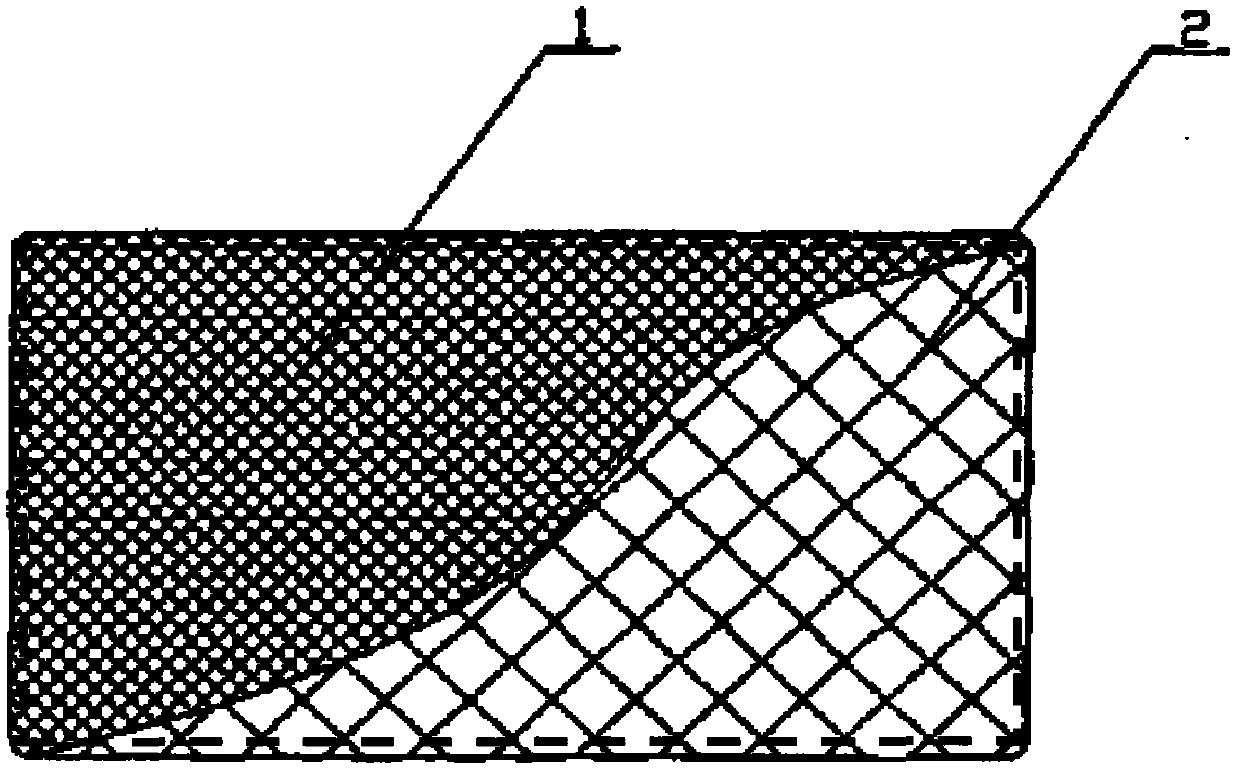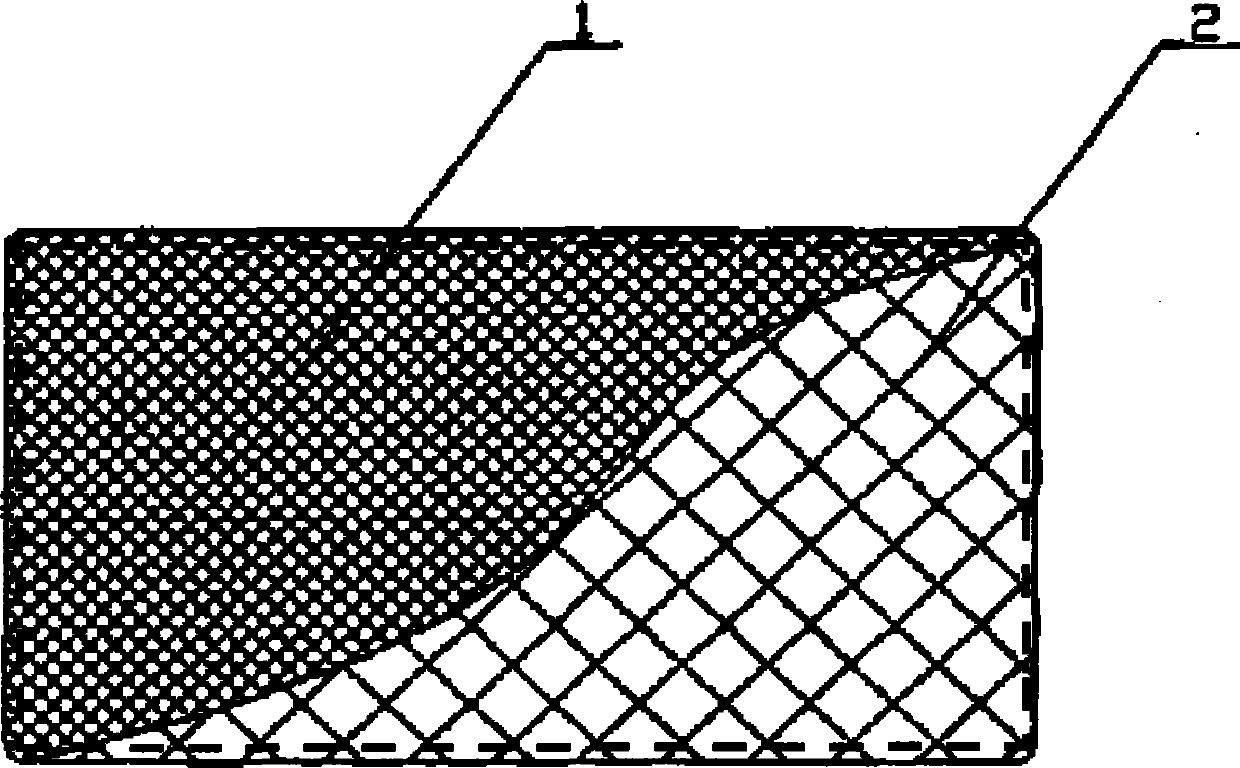Biological-material complex patch
A biomaterial and biopatch technology, applied in medical science, prosthesis, etc., can solve the problems of increased postoperative recurrence rate, insufficient long-term strength, and increased patient pain, and achieves easy tissue ingrowth and good tolerance. Infectivity, the effect of good tolerance to infection
- Summary
- Abstract
- Description
- Claims
- Application Information
AI Technical Summary
Problems solved by technology
Method used
Image
Examples
Embodiment 1
[0032] Embodiment 1 is applied to clinical data statistics:
[0033] The present invention was compared with the commonly used Bard Composix E / X patch in clinical practice, which was used in 30 clinical patients, and the observation period was 6-12 months. The method and results are as follows:
[0034] In the control group, the preformed Bard Composix E / X patch was taken, the polypropylene material layer was facing the abdominal wall, and the expanded polytetrafluoroethylene material layer was facing the abdominal viscera. Sutures were fixed to the defected abdominal wall.
PUM
| Property | Measurement | Unit |
|---|---|---|
| thickness | aaaaa | aaaaa |
Abstract
Description
Claims
Application Information
 Login to View More
Login to View More - R&D
- Intellectual Property
- Life Sciences
- Materials
- Tech Scout
- Unparalleled Data Quality
- Higher Quality Content
- 60% Fewer Hallucinations
Browse by: Latest US Patents, China's latest patents, Technical Efficacy Thesaurus, Application Domain, Technology Topic, Popular Technical Reports.
© 2025 PatSnap. All rights reserved.Legal|Privacy policy|Modern Slavery Act Transparency Statement|Sitemap|About US| Contact US: help@patsnap.com



